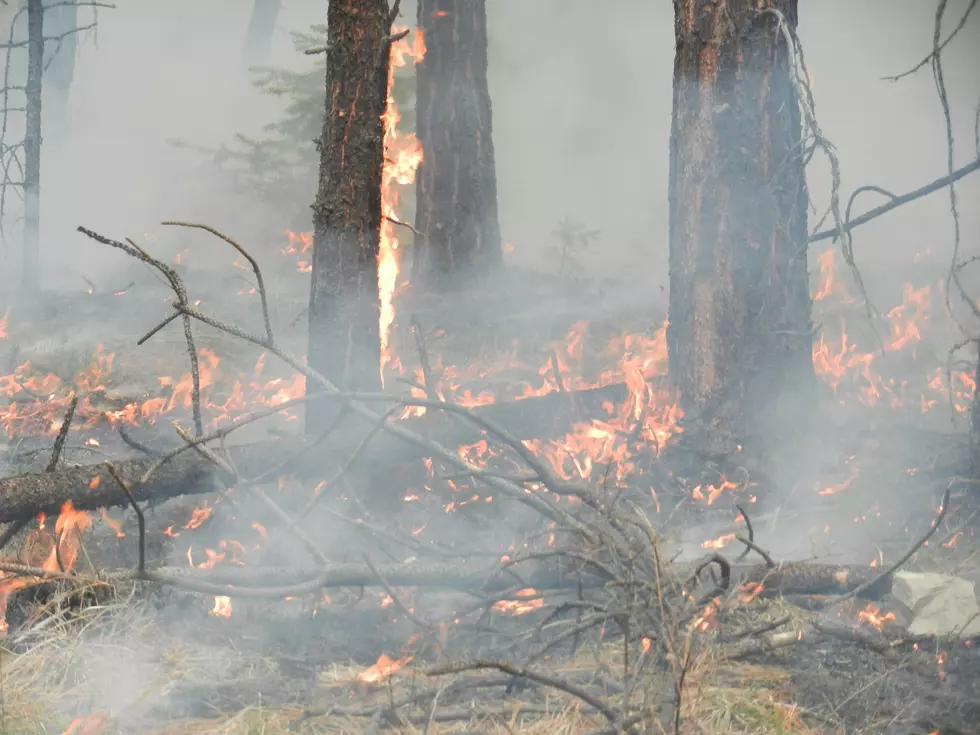
Lolo and Bitterroot national forests stay on top of wildfire starts
While the Lolo and Bitterroot national forests have one significant fire to contend with, they’re still winning the game of wildfire whack-a-mole with all the little fires that keep popping up.
Heading into the weekend, the Cinnabar Fire in the Welcome Wilderness above Rock Creek is still burning but hasn’t expanded beyond the 2,000-acres it burned on Monday. However, the fire still has zero containment.
A Type 2 management team is overseeing the fire and 89 personnel are assigned, including one hotshot crew, two initial attack crews, one engine and five helicopters. To protect firefighters and the public, an emergency closure includes the entire Welcome Creek Wilderness and additional roads and trails adjacent to the Wilderness.
On Friday, firefighters continued to clear a line along the Bitterroot/Rock Creek Divide trail from Cleveland Mountain to the Cinnabar Saddle. They are also laying hose along the line.
Crews also worked to extend a line on the western edge of the fire north toward Eightmile Saddle. They also planned to use a masticator to clear and improve Forest Service Road 4268 southwest of the fire.
A cold front is supposed to blow through western Montana on Saturday, and fire bosses are concerned that associated winds from the southwest could fan the flames to produce another run. They’re also hoping no campers start any new fires during this last weekend of August.
At the beginning of the fire season, Montana firefighters decided on a strategy where they’d jump on every fire as quickly as possible so they could put the fires out before they got big. That way, firefighters wouldn’t have to work together for very long, reducing the possibility of COVID-19 transmission.
While Montana hasn’t had the extreme conditions that make for a bad fire season, with the exception of the Cinnabar Fire, firefighters have been nailing their goal of quick suppression.
The Long Gulch Fire was spotted by lookouts on Monday in the Tamarack Creek drainage 5 miles northeast of St. Regis in the Superior Ranger District where the fire danger is rated as high.
By Tuesday morning, it was 8 acres and burning in an active logging unit of the 7 Mag timber sales. Active logging areas tend to have slash and debris lying around that burn easily, and some logging equipment was damaged.
By Thursday, hotshot crews had surrounded the fire with a fire line and hoses and the fire 60% contained. Crews were able to work 50 to 60 feet within the fire line extinguishing hotspots.
Then on Thursday evening, 10 firefighters from the Plains/Thompson Falls Ranger District responded to the Shorty Fire in the Prospect Creek drainage west of Thompson Falls. By Friday morning, it had burned about 5 acres so a 20-man Helena Inter-Regional Hotshot crew was called in along with three more local firefighters. They hoped that an excavator from the Long Gulch Fire would arrive at some point during Friday.
As temperatures rose Friday afternoon, firefighters from the Missoula Ranger District responded to a fire start in the Crystal Creek area along Interstate 90 south of Turah. No more information was available as of press time Friday.
The Bitterroot National Forest, where the fire rating is very high, had five fire starts on Thursday, but fortunately two of those fires – Painted Rocks and Storm Creek – are already out.
The largest of the five fires and the one closest to human populations, the Sawdust Fire in the Sapphire Mountain southeast of Hamilton, is 6 acres but no additional growth is expected. Two helicopters and 13 firefighters responded quickly so fire lines are almost complete and they’re starting to mop-up.
The Twelve Mile Fire near the crest of the Bitterroot Range is in steep, inaccessible terrain so helicopters are conducting water drops. Fortunately, it’s small, only a tenth of an acre.
The Fire Mountain Fire is also just a tenth of an acre deep in the Bitterroot-Selway Wilderness of Idaho. But crews are hiking in to deal with the fire.
The Sweathouse 2 Fire, a quarter-acre fire in the Bitterroot Mountains west of Stevensville, hasn’t grown since it started on Aug. 19 and doesn’t appear to be active.
As of Friday, the Bitterroot National Forest has had 42 small wildfires, 12 human-caused and 30 lightning-caused.
Critical fire weather conditions are possible Saturday afternoon and evening, as a dry cold front increases winds out of the west and southwest. While it remains dry and unstable, firecrews are looking forward to Sunday into Monday, which are predicted to be much cooler, have higher humidity and a chance of showers both days.
People are reminded to be careful with campfires and cigarettes and don’t park vehicles in grassy fields where hot engines can spark a fire.
Contact reporter Laura Lundquist at lundquist@missoulacurrent.com
